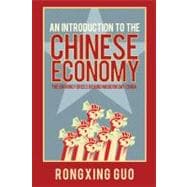
| List of figures | |
| List of tables | |
| List of abbreviations | |
| Acknowledgments | |
| Notes from the author | |
| A brief history of China | |
| The origins of the nation | |
| Rise and fall of the empire | |
| China in the new millennium | |
| Spatial and administrative divisions | |
| Administrative divisions | |
| Great regions | |
| Geographical belts | |
| Southern and northern parts | |
| Ethno-cultural areas | |
| The foundation of the Chinese economy (I) | |
| Land and water | |
| Minerals and energy resources | |
| Environmental quality | |
| Policy implications | |
| The foundation of the Chinese economy (II) | |
| Population | |
| Labor and education | |
| Technological innovation | |
| Cultural influence | |
| Political and economic systems | |
| Party versus state | |
| State and market | |
| Market-oriented reform | |
| Enterprise management | |
| Finance and banking | |
| Future perspective | |
| Economic growth and social justice | |
| Economic growth | |
| Regional economic differences | |
| How (un)equal is the Chinese society? | |
| Poverty and social security | |
| International economic engagement | |
| Historical background | |
| China opens its door | |
| Foreign direct investment | |
| Foreign trade | |
| Studying Chinese economics: Key issues | |
| Why China has a collectivistic culture | |
| Why China adopted a gradual economic reform | |
| Why the Chinese economy cannot be spatially optimized | |
| Why China's long-term growth isn't sustainable | |
| Appendixes | |
| A historical chronology | |
| China's cultural similarity with your country | |
| Bibliography | |
| Index | |
| Table of Contents provided by Publisher. All Rights Reserved. |
The New copy of this book will include any supplemental materials advertised. Please check the title of the book to determine if it should include any access cards, study guides, lab manuals, CDs, etc.
The Used, Rental and eBook copies of this book are not guaranteed to include any supplemental materials. Typically, only the book itself is included. This is true even if the title states it includes any access cards, study guides, lab manuals, CDs, etc.